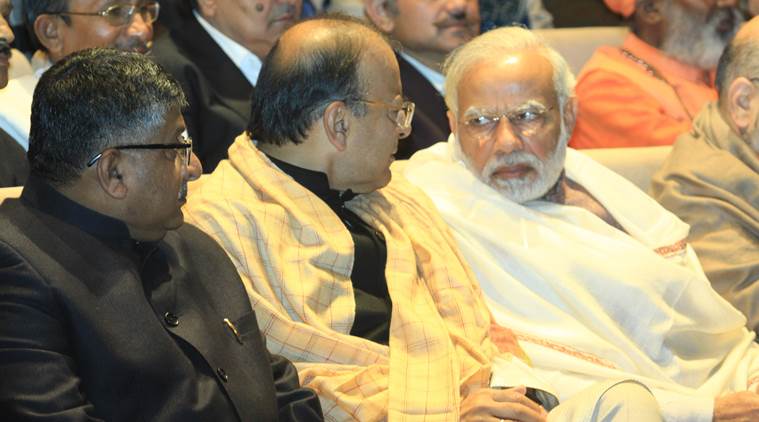
With the government stepping in time and again to bail out banks by recapitalising them with taxpayer money, banks have stepped up writeoffs of loans taken by rogue borrowers. They wrote off a whopping Rs 1,56,702 crore of non-performing loans during the nine-month ended December 2018, taking the total loan writeoff to over Rs 7,00,000 crore in the last 10 years, according to figures revealed by the Reserve Bank of India (RBI).
Bulk of the writeoffs, or almost four-fifth of the total amount written off in the last 10 years, have accrued in the last five years since April 2014. In its reply to an application filed by The Indian Express, the RBI revealed that the total loan written off in the last five years since April 2014 amounted to Rs 5,55,603 crore.
Eager to show lower bad loans, banks wrote off Rs 1,08,374 crore in 2016-17 and Rs 161,328 crore in 2017-18. In the first six months of 2018-19, they wrote off Rs 82,799 crore. The quantum of writeoff zoomed to Rs 64,000 crore in the October-December 2018 quarter.
Banking sources said very little is known about the identity of the borrowers and the amount written off in the case of individual borrowers. While banks claim that the recovery measures continue even after loans are written off, sources said not more than 15-20 per cent is recovered and the writeoff figures every year are rising, much faster than recoveries and recapitalisation.
“Banks are required to extinguish all available means of recovery before writing off any account fully or partly. It is observed that some banks are resorting to technical writeoff of accounts, which reduces incentives to recover. Banks resorting to partial and technical writeoffs should not show the remaining part of the loan as standard asset,” the RBI had said in an earlier circular to banks.
The amount of technical writeoff is required to be certified by statutory auditors.
The central bank had explained that writing off NPAs is a regular exercise carried. “A substantial portion of this writeoff is, however, technical in nature. It is primarily intended at cleansing the balance sheet and achieving taxation efficiency. In ‘Technically Written Off’ ‘ accounts, loans are written off from the books at the Head Office, without foregoing the right to recovery. Further, writeoffs are generally carried out against accumulated provisions made for such loans. Once recovered, the provisions made for those loans flow back into the profit and loss account of banks,” the RBI had said in an explanatory note.
But neither the banking sector nor the RBI discloses the identity of borrowers whose loans are written off by banks. “I have nothing against writeoff but it’s to be done scarcely and within a policy with all efforts to recover the money. Any asset which is backed by tangible asset is never written off. You must be subject to scrutiny for these writeoffs. There must be a policy. You ask any banker. They have written off Vijay Mallya’s loan. Then how are they going to recover that money? All I am saying is that write off the loan as per policy but that has to be done by somebody who is authorised to do it. Use it sparingly and do it where essential. If there’s an asset, why are you writing it off?” a former RBI official said.
The government had last year announced a recapitalization programme of Rs 2.11 lakh crore to bail out banks which are now stuck with over Rs 10 lakh crore NPAs.
Bank unions have long been demanding the government to make public names of defaulters. “It is known that bulk of these bad loans are attributable to big businesses and the affluent. Many cases of default are found to be deliberate, wilful and on account of diversion of funds. Unfortunately bank loan default is still a civil offence and hence criminal proceedings are not being instituted against them,” AIBEA general secretary C H Venkatachalam said.
[“source=indianexpress”]



